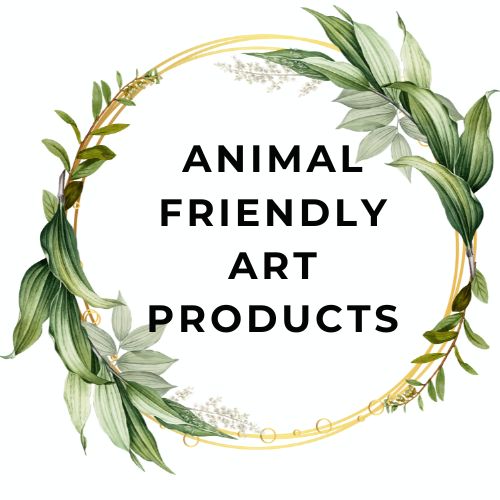An introduction to the art business | A useful guide to starting your art career
As an artist in the commission market, I have been approached by many fellow artists seeking advice over the years. While there is no universal solution to this question, I aim to provide some suggestions based on my own experiences that may assist you in starting your own art enterprise. Remember that each business is as distinctive as the artist running it, so consider this information as a guide rather than a rigid set of instructions.
Important point
Firstly, it's important to remember that with drive, dedication and patience, every artist has the potential to succeed. While you may have started by creating art for free or for pocket money, it's essential to realize that this is not sustainable if you want to run a successful business. You'll need to find people who appreciate your work and are willing to pay for it. Remember, you've invested time and effort into your work and money on the materials you use. So don't sell yourself short. With perseverance, you'll find customers who love your work and are willing to pay your prices.
USP - your unique selling point
To make selling your 'product' easier, take some time to identify your unique selling point. This could be a technique you've created or an old technique that few artists use today. If you've been in the art industry for many years, that is a great selling point, as it shows your passion and expertise. Keep updating your list, particularly if someone points out something you may have missed. Incorporating details about your professional background, educational qualifications, and accolades into your business profile can significantly improve your success.
Overheads - An example of how you can price your art
When running a successful art business, pricing your work appropriately is critical. To determine the right price point for your creations, it's important to consider various factors, including the time and effort required to produce each piece, the cost of necessary materials, shipping and packaging expenses, and any overhead costs associated with running your business. By factoring in all of these expenses, you can create a pricing structure that accurately reflects the actual value of your artwork and adjust it over time. For example, you might begin by calculating your costs based on the hours it took to create a piece, determining a fair hourly rate, and adding in any additional fees such as framing or overhead expenses. However, this may not be convenient for your work. Additionally, it's essential to regularly update your prices to reflect changes in inflation, your growing experience and expertise, and other external factors that may affect the cost of your materials or business expenses. By taking a thoughtful and detailed approach to pricing your artwork, you can set yourself up for long-term success and ensure your talent is valued appropriately.
Pricing - 'low prices will encourage more sales'
When starting an art business, there may be better approaches than setting high prices for your work. While it may work in certain situations, such as having a solid network or marketing strategy, it's more common for artists to charge too little. Setting your prices too low might discourage potential customers from commissioning your work, as they may assume that low prices mean low quality. This could also lead them to believe your materials are cheap and the artwork won't last long. It's important to be realistic about your pricing and remember that it may take time to turn a profit. However, if you value your work, you should charge accordingly. Don't worry if someone isn't willing to pay your prices – there will be others who are. Avoid constantly changing your prices to stimulate sales during challenging times, which may negatively impact your business. Instead, consider offering special deals occasionally to prevent alienating past customers.
Payments and contracts
After determining your pricing structure, it's vital to establish your terms and conditions. Potential customers will appreciate being able to review these formalities before making a purchase. Your terms and conditions should include necessary information such as crucial customer information, deposits, delivery fees, timeframes, and additional charges (e.g. framing or utilities). This list may vary depending on your specific service. If there are extra charges that you cannot provide upfront, such as framing or postage, be sure to do some research and give an estimate. Tell your customer you will provide them with an exact price once you have all the necessary information. Before accepting payment, provide a breakdown of costs via email, text, or physical invoice. This will serve as a contract, preventing any surprises. Adding extra charges later without prior notice is not good business practice, nor is omitting charges and absorbing the costs yourself. Consider researching other websites to gather insight into the necessary terms and conditions to include. We suggest creating an order form for each customer and filling in as much information as possible. This will provide invaluable information for future reference, especially if the customer returns to order a matching product later.
Research other artists
Researching other artists, both locally and online, can provide valuable insight. Although it's important to analyse local competition, you should also research other artists from all over the world that offer a similar service. There are always valuable resources that you can access online that can provide helpful advice and guidance. However, it's important to remember that this is your business. Don't make the mistake of setting your prices based solely on what other artists are charging. They may have established a clientele and collectors over time, which affects their pricing. Instead, use their prices as a guide and set your own based on your unique style and business goals.
Circumstances - full time or part time business?
If you are living alone and responsible for paying bills without a partner's support, it can be challenging and stressful to pursue a new venture full-time. Based on my personal experience, I suggest dedicating regular time to building your new business while still receiving a stable source of income. In contrast, there are various paths to take in the art industry. Being self-employed demands significant time and effort. Remember that it may take several years before your art business can generate enough income to cover your expenses comfortably and allow extra spending on things you enjoy. It is of utmost importance to have a well-crafted business plan that encompasses all the critical aspects of your business. You should regularly update your schedule to ensure that it remains relevant and reflective of any changes in the market or your business strategy. A comprehensive and up-to-date business plan can serve as a roadmap to guide your business towards success.
The importance of a good website
It's crucial to have a functional website that represents your business effectively. Over the years, I have visited many websites that lacked important information, contained spelling errors, had poor font choices, and used overly bright and distracting backgrounds that took away from the main message. Including a personal photo of yourself on the website is desirable to establish a connection with your audience. As an artist selling your work, trust is a vital factor, and a personalized website can help build that trust. If you're offering a personal service, having a website that's both accessible to your clients and works well for you is ideal. Consider contacting a local web design company to help create or update your website professionally. Avoid companies that promise the number one spot on a search engine, as it's impossible to guarantee. Lastly, include a blog on your website and post regularly. A web designer can offer valuable advice to ensure your website functions correctly, or you can build it yourself if you have the knowledge.
Promoting yourselfPromoting your work as much as the product itself is important as a creator. Using social media regularly is highly recommended, but it's essential to diversify your platforms to see what works best for you. Relying solely on one platform can be risky as algorithms and rules change over time. Do some research and figure out the best times to post, and take tips from other users. Mix up your posts with pictures and videos to keep your followers engaged. Post on a regular basis. However, social media should never replace the need for a personal website since you cannot control your social media presence. Rules change frequently, and you could lose views or likes overnight, or worse, the platform could fold, and you would lose your presence entirely. Newsletters are a great way to build an audience for your product. Providing engaging and valuable content will encourage more followers/subscribers, and people will voluntarily share with their friends and family. Advertising in traditional media or online can be expensive and may not provide a good return on investment. If you decide to advertise, do your research first and reach out to companies on your own rather than allowing yourself to be solicited by someone on commission.
Finally, remember that your business is a creation, just like a piece of art. Take your time, embrace the challenges, and good luck with your endeavour! |
Updated: June 2023
Article first written: November 2018
Article first written: November 2018




